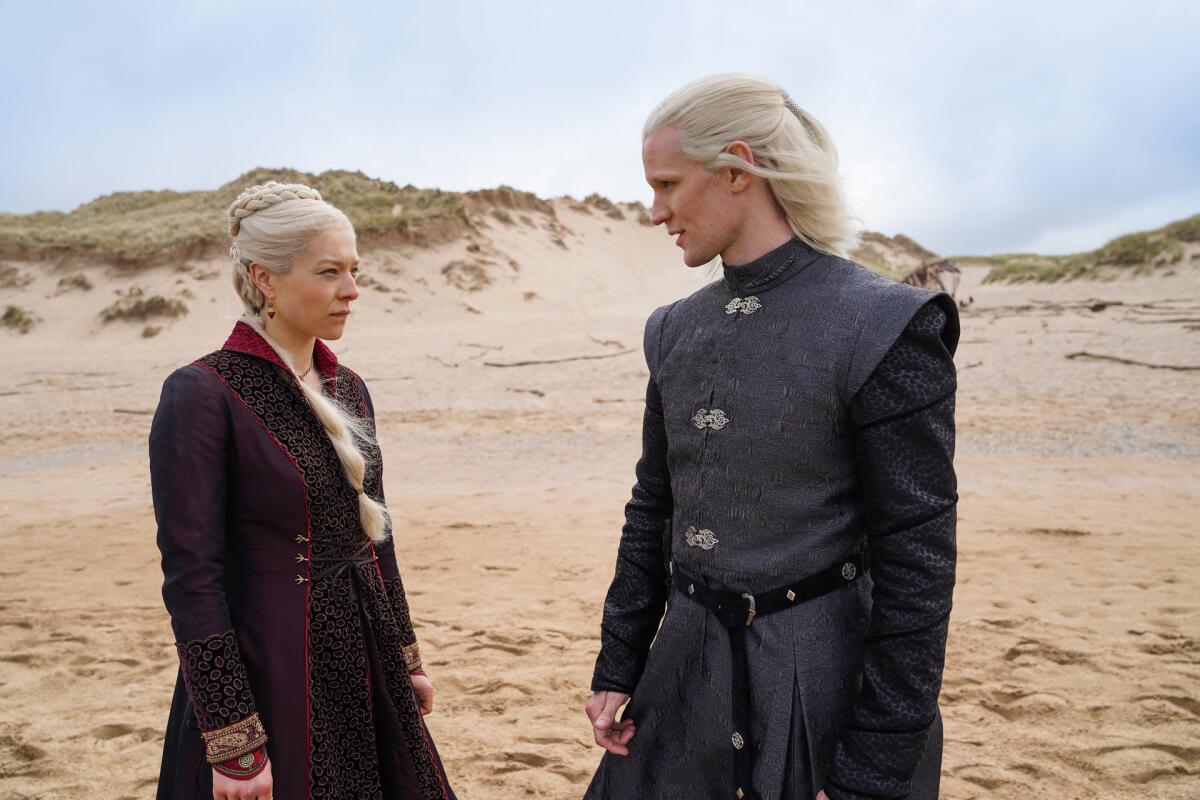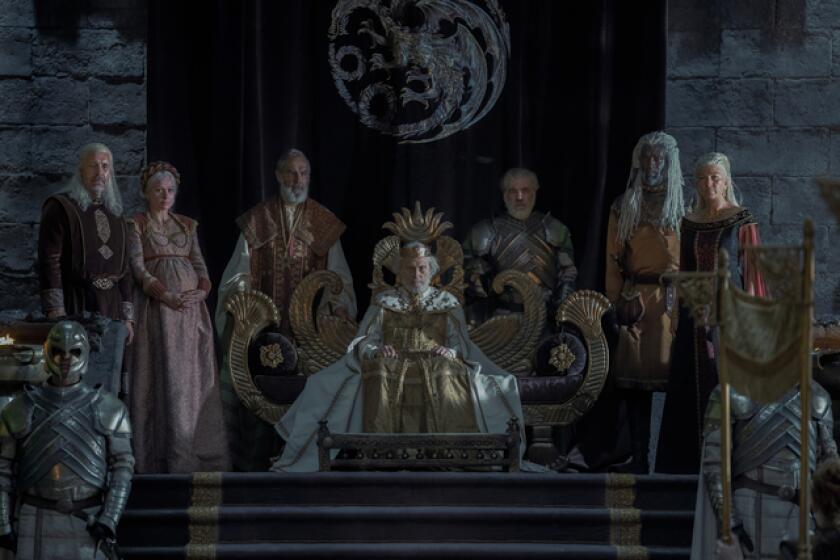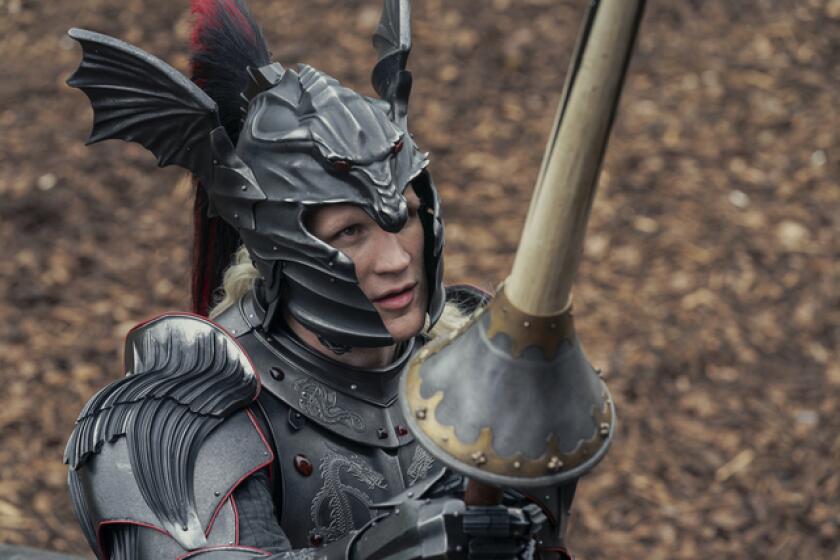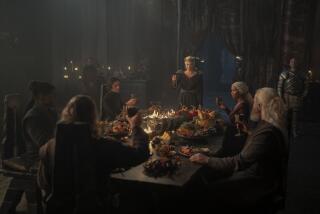‘House of the Dragon’ explained: A history of Targaryen incest

This story contains spoilers for “House of the Dragon,” Episode 7 “Driftmark.”
The romance that has long been teased in “House of the Dragon” is finally official.
The seventh episode of HBO’s “Game of Thrones” prequel starts with a funeral and ends with the wedding of Princess Rhaenyra Targaryen and her uncle Daemon. The pair have danced around each other since before they each wed a Velaryon, so it’s almost poetic that their relationship is consummated in Driftmark (the seat of House Velaryon).
Audiences will have to wait to see how King Viserys will react to learning his daughter and brother are married. But considering Episode 7 reveals that two of Viserys’ other children — Aegon and Helaena — are betrothed to each other, any objections wouldn’t be because the newlyweds are niece and uncle.
Whether you’re new to Westeros or making a long-awaited return, here’s everything you need know about the ‘Game of Thrones’ prequel, updated weekly.
“Game of Thrones” fans know that the Targaryens have a long tradition of marrying within the family. Aegon the Conqueror, the first king to sit on the Iron Throne and rule over the Seven Kingdoms, was married to both of his sisters who helped him in his conquest — Queens Visenya and Rhaenys. This custom of brothers marrying sisters continued for generations, all the way to Daenerys’ father, the Mad King Aerys II, the son of married siblings who was himself married to his sister.
Why do Targaryens keep marrying each other?
In short, to keep the blood of the dragon as pure as possible. Books such as “The World of Ice & Fire: The Untold History of Westeros and the Game of Thrones” and “Fire & Blood” detail how the Targaryen tradition of incestuous marriages can be traced back to their time in Old Valyria. For Valyrian families, especially those who raised and rode dragons, maintaining this purity was of paramount importance. The ideal unions were between brother and sister, but when a sibling wasn’t available, uncles, aunts and cousins were thought of as the next-best candidates.

Is incest accepted in Westeros?
It is not! In fact, the first marriage between Targaryen siblings after King Aegon I conquered Westeros led to the first uprising against the monarchy.
The dominant religion in Westeros is the Faith of the Seven — although some places like the North still worship the old gods. According to the Faith of the Seven, incest between siblings and between a parent and child is an abomination. (It appears cousins are considered far enough removed that their unions are not sin.)
Which characters matter? Which Houses are a factor? Why are their names so hard to spell? We have viewers of the ‘Game of Thrones’ prequel covered.
When Aegon the Conqueror took over Westeros, he was already married to his sisters, so the Faith did not comment on these unions. Plus, the Targaryens had just shown the Seven Kingdoms the power of their dragons during the conquest.
But the Faith and the faithful did not remain as silent for King Aegon’s descendants. During the reign of Aegon’s son, King Aenys, the king’s half-brother Prince Maegor caused a rift between the Targaryens and the Faith by taking on a second wife. King Aenys caused further anger by marrying his eldest daughter to his eldest son.
The leader of the Faith, the High Septon, denounced King Aenys as an abomination for this marriage. This led to a rebellion against House Targaryen by the military arm of the Faith of the Seven, the Faith Militant, joined by some rebel Houses.

How did Targaryens become the exception?
When King Jaehaerys I took his place on the Iron Throne, he did what his father (King Aenys I) and uncle (King Maegor I) could not: He patched things up with the Faith of the Seven.
(This Jaehaerys is the king whose reign immediately preceded the current king on “House of the Dragon,” Viserys — making him Princess Rhaenyra’s great-grandfather. King Aenys’ third son, Jaehaerys was married to his younger sister, Alysanne.)
Jaehaerys promised that the Iron Throne would always protect and defend the Faith. In exchange, he convinced them that the Targaryens were different from the other people in Westeros because they are dragonriders from old Valyria. Meaning, the Faith’s rules forbidding incest remain valid, but they officially don’t apply to the Targaryens.
Thanks to King Jaehaerys, the Targaryens had the Faith’s blessing to continue with their incestuous marriages for generations to ensure the blood of the dragon remains pure. “Game of Thrones” fans know how that turned out.
More to Read
The complete guide to home viewing
Get Screen Gab for everything about the TV shows and streaming movies everyone’s talking about.
You may occasionally receive promotional content from the Los Angeles Times.









